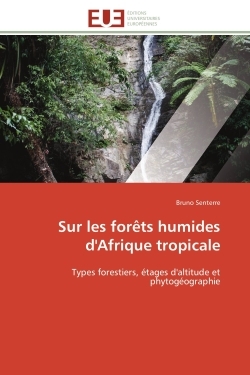- EAN13
- 9786131528316
- Éditeur
- Univ Européenne
- Date de publication
- 9 décembre 2011
- Collection
- OMN.UNIV.EUROP.
- Nombre de pages
- 476
- Dimensions
- 22,9 x 15,2 x 2,7 cm
- Poids
- 694 g
- Langue
- fre
Sur Les Forêts Humides D'Afrique Tropicale
Senterre-B
Univ Européenne
Prix public : 98,00 €
In this work, a new approach is proposed on the problem of typology in rain forests, focusing on zonal and non-zonal forest types. The links between phytogeography and phytosociology approaches are discussed, at the scale of the guineo-congolian region, and the homologies are emphasized leading to an "open" conception of hierarchical classifications. A new nested plot method is proposed for the typology of tropical rain forests, based on a structural definition of forest strata, and is applied to study sites from Atlantic (Equatorial Guinea) to continental (Cameroon) central Africa, and from sea level to 1300 m. There are 3 main results in the present study. First, a floristic, physiognomic, functional and phytogeographical description of the main forest types of Atlantic central Africa is proposed, including a synthetic map of guineo-congolian rain forests. Second, the theory of ecological transgressions and the replaceability of ecological factors are illustrated by many examples. Third, a foothill refuge hypothesis is proposed, which differs from montane and fluvial refuges by its typically zonal nature.


















